
Chapter 22
Frontiers of Microeconomics
TRUE/FALSE
1. The science of economics is a finished jewel, perfect and unchanging.
ANS: F DIF: 1 REF: 22-0
NAT: Analytic LOC: The Study of economics, and definitions in economics
TOP: economics MSC: Definitional
2. In economics, a difference in access to relevant knowledge is called a behavioral asymmetry.
ANS: F DIF: 1 REF: 22-1
NAT: Analytic LOC: The Study of economics, and definitions in economics
TOP: Asymmetric information MSC: Definitional
3. Informational asymmetry may apply to a hidden action or hidden characteristic where the informed party may
be reluctant to reveal relevant information.
ANS: T DIF: 2 REF: 22-1
NAT: Analytic LOC: Understanding and applying economic models
TOP: Asymmetric information MSC: Applicative
4. An example of asymmetric information is when a seller of a house knows more than the buyer about the
house’s condition.
ANS: T DIF: 2 REF: 22-1
NAT: Analytic LOC: Understanding and applying economic models
TOP: Asymmetric information MSC: Applicative
5. Economists have found that asymmetric information is not very prevalent.
ANS: F DIF: 2 REF: 22-1
NAT: Analytic LOC: The Study of economics, and definitions in economics
TOP: Asymmetric information MSC: Interpretive
6. An example of an information asymmetry is when a worker knows more than his employer about his work
effort.
ANS: T DIF: 1 REF: 22-1
NAT: Analytic LOC: Understanding and applying economic models
TOP: Asymmetric information MSC: Interpretive
7. The criminal actions of the top managers of corporations such as Enron, Tyco, WorldCom, and Adelphia are
an example of moral hazard.
ANS: T DIF: 2 REF: 22-1
NAT: Analytic LOC: Understanding and applying economic models
TOP: Moral hazard MSC: Applicative
8. The problem of moral hazard is a problem of hidden action.
ANS: T DIF: 1 REF: 22-1
NAT: Analytic LOC: Understanding and applying economic models
TOP: Moral hazard MSC: Interpretive
9. The problem that arises when one person performs a task on behalf of another person is called the lemons
problem.
ANS: F DIF: 1 REF: 22-1
NAT: Analytic LOC: Understanding and applying economic models
TOP: Moral hazard MSC: Interpretive
205

206 Chapter 22/Frontiers of Microeconomics
10. One of the things that employers can do to lessen the moral hazard problem involving their employees is to
pay them in advance for their work.
ANS: F DIF: 2 REF: 22-1
NAT: Analytic LOC: Understanding and applying economic models
TOP: Moral hazard MSC: Interpretive
11. In the employer-worker relationship, the employer is regarded as the "principal" and the worker is regarded as
the "agent."
ANS: T DIF: 2 REF: 22-1
NAT: Analytic LOC: Understanding and applying economic models
TOP: Moral hazard MSC: Definitional
12. The moral hazard problem and the desire of firms to lessen that problem serve as a plausible explanation for a
firm paying above-equilibrium wages to its workers.
ANS: T DIF: 2 REF: 22-1
NAT: Analytic LOC: Understanding and applying economic models
TOP: Moral hazard MSC: Interpretive
13. The classic example of adverse selection is the market for used cars.
ANS: T DIF: 2 REF: 22-1
NAT: Analytic LOC: Understanding and applying economic models
TOP: Adverse selection MSC: Interpretive
14. The two major problems caused by asymmetric information are the moral-hazard problem and the principal-
agent problem.
ANS: F DIF: 2 REF: 22-1
NAT: Analytic LOC: Understanding and applying economic models
TOP: Asymmetric information MSC: Interpretive
15. Signaling is an action taken by an uninformed party to induce an informed party to reveal information.
ANS: F DIF: 2 REF: 22-1
NAT: Analytic LOC: Understanding and applying economic models
TOP: Screening | Signaling MSC: Definitional
16. An example of signaling is a boyfriend giving an expensive, romantic gift to his girlfriend to convey his love
for her.
ANS: T DIF: 2 REF: 22-1
NAT: Analytic LOC: Understanding and applying economic models
TOP: Signaling MSC: Applicative
17. Valerie prefers A to B and she prefers B to C. If Valerie's preferences are transitive, then she prefers A to C.
ANS: T DIF: 1 REF: 22-2
NAT: Analytic LOC: Understanding and applying economic models
TOP: Transitivity MSC: Definitional
18. The Condorcet voting paradox shows that outcomes based on dictatorial preferences do not always obey the
property of transitivity.
ANS: F DIF: 2 REF: 22-2
NAT: Analytic LOC: Understanding and applying economic models
TOP: Condorcet paradox MSC: Interpretive
19. The Condorcet paradox implies that the order in which items are voted on under majority rule is unimportant.
ANS: F DIF: 1 REF: 22-2
NAT: Analytic LOC: Understanding and applying economic models
TOP: Condorcet paradox MSC: Interpretive

Chapter 22/Frontiers of Microeconomics 207
20. Condorcet explained his paradox in a 1951 book called Social Choice and Individual Values.
ANS: F DIF: 1 REF: 22-2
NAT: Analytic LOC: Understanding and applying economic models
TOP: Condorcet paradox MSC: Interpretive
21. The Condorcet paradox demonstrates that the order in which people vote on choices may influence the final
outcome.
ANS: T DIF: 2 REF: 22-2
NAT: Analytic LOC: Understanding and applying economic models
TOP: Condorcet paradox MSC: Interpretive
22. Borda count is a voting method often used in polls that rank sports teams.
ANS: T DIF: 2 REF: 22-2
NAT: Analytic LOC: Understanding and applying economic models
TOP: Borda count MSC: Interpretive
23. Arrow’s impossibility theorem demonstrates the impossibility of the median voter theorem.
ANS: F DIF: 2 REF: 22-2
NAT: Analytic LOC: Understanding and applying economic models
TOP: Arrow's impossibility theorem MSC: Interpretive
24. Arrow's impossibility theorem shows that it is impossible to find a better voting system than pairwise majority
voting.
ANS: F DIF: 2 REF: 22-2
NAT: Analytic LOC: Understanding and applying economic models
TOP: Arrow's impossibility theorem MSC: Interpretive
25. Majority rule will produce the outcome most preferred by the median voter.
ANS: T DIF: 2 REF: 22-2
NAT: Analytic LOC: Understanding and applying economic models
TOP: Median voter theorem MSC: Definitional
26. According to the median voter theorem, majority rule will produce an outcome that is inconsistent with
transitive preferences.
ANS: F DIF: 3 REF: 22-2
NAT: Analytic LOC: Understanding and applying economic models
TOP: Median voter theorem MSC: Interpretive
27. An implication of the median voter theorem is that Republicans and Democrats will try to align their views
with those of the median voter.
ANS: T DIF: 2 REF: 22-2
NAT: Analytic LOC: Understanding and applying economic models
TOP: Median voter theorem MSC: Interpretive
28. Political leaders are always aiming for an optimal combination of efficiency and equality.
ANS: F DIF: 1 REF: 22-2
NAT: Analytic LOC: Understanding and applying economic models
TOP: Political economy MSC: Interpretive
29. In the field of study called political economy, economists make use of insights from the field of psychology.
ANS: F DIF: 1 REF: 22-2
NAT: Analytic LOC: Understanding and applying economic models
TOP: Political economy MSC: Definitional
30. A "satisficer" is a person whose decisionmaking is the same as that predicted by mainstream economic
models.
ANS: F DIF: 2 REF: 22-3
NAT: Analytic LOC: Understanding and applying economic models
TOP: Behavioral economics MSC: Definitional

208 Chapter 22/Frontiers of Microeconomics
31. Researchers have found that the systematic mistakes that people make in their decisionmaking include a lack
of confidence in their own abilities.
ANS: F DIF: 2 REF: 22-3
NAT: Analytic LOC: Understanding and applying economic models
TOP: Behavioral economics MSC: Interpretive
32. Most economic models incorporate the assumption of rational behavior on the part of economic actors.
ANS: T DIF: 1 REF: 22-3
NAT: Analytic LOC: Understanding and applying economic models
TOP: Behavioral economics MSC: Interpretive
33. Studies of human decision-making have found that people do not give enough weight to a small number of
vivid observations.
ANS: F DIF: 2 REF: 22-3
NAT: Analytic LOC: The Study of economics, and definitions in economics
TOP: Behavioral economics MSC: Interpretive
34. Studies of human decision making have found that people are reluctant to change their minds.
ANS: T DIF: 2 REF: 22-3
NAT: Analytic LOC: The Study of economics, and definitions in economics
TOP: Behavioral economics MSC: Interpretive
35. Evidence from experiments in which real people play the ultimatum game supports the idea that people care
about fairness as well as about maximization of their personal wealth.
ANS: T DIF: 2 REF: 22-3
NAT: Analytic LOC: Understanding and applying economic models
TOP: Behavioral economics MSC: Interpretive
36. Based on studies of human decision making, many people care more about the fairness of a game than about
their personal winnings.
ANS: T DIF: 2 REF: 22-3
NAT: Analytic LOC: Understanding and applying economic models
TOP: Behavioral economics MSC: Interpretive
37. The tendency of many people to procrastinate supports the view that people are consistent over time.
ANS: F DIF: 2 REF: 22-3
NAT: Analytic LOC: Understanding and applying economic models
TOP: Behavioral economics MSC: Interpretive
SHORT ANSWER
1. Explain what is meant by "asymmetric information." Identify and explain the two basic types of problems that
arise when there is asymmetric information.
ANS:
Asymmetric information is present when there is a difference in access to relevant information. Examples include
information differences between (1) a worker and his employer, (2) a buyer and seller, and (3) an insured person and
his insurer. The two basic types of problems are (1) moral hazard, which is a problem of hidden actions and
ordinarily involves a principal and an agent, and (2) adverse selection, which is a problem of hidden characteristics
or "lemons."
DIF: 2 REF: 22-1 NAT: Analytic
LOC: Understanding and applying economic models TOP: Asymmetric information
MSC: Definitional

Chapter 22/Frontiers of Microeconomics 209
2. Explain how the presence of asymmetric information in car insurance markets may lead people who are good
drivers or even average drivers to choose not to buy car insurance unless the law requires it.
ANS:
Drivers (buyers and potential buyers of car insurance) know more about their driving habits than do the insurance
companies (sellers of car insurance). The price of car insurance is likely to reflect the information asymmetry in that
it incorporates more of a risk component than is really necessary to insure good and average drivers. Consequently,
good and average drivers are priced out of the market and they rationally choose not to buy the insurance unless they
are required to do so.
DIF: 2 REF: 22-1 NAT: Analytic
LOC: Understanding and applying economic models TOP: Asymmetric information
MSC: Interpretive
3. Explain the Condorcet paradox. To which type of voting system does it apply?
ANS:
The Condorcet paradox applies directly to pairwise majority voting. It shows that even if individual voters'
preferences exhibit transitivity, that property does not follow through to outcomes of pairwise majority voting.
Consequently, the order in which choices are put up, in pairwise fashion, affects the final outcome. Using choices A,
B, and C, it may be the case, for example, that under pairwise voting voters choose A over B and B over C, but then
they may choose C over A. This result can obtain even when individual voters' preferences are transitive; hence, the
paradox.
DIF: 2 REF: 22-2 NAT: Analytic
LOC: Understanding and applying economic models TOP: Condorcet paradox
MSC: Definitional
4. Assume there are two major political parties: the Conservatives and the Liberals. What does the median voter
theorem imply about the nature of the platforms (that is, policy stances) of the Conservatives and Liberals?
ANS:
The median voter theorem implies that political parties will set their platforms so as to appeal to the median
("middle of the distribution") voter. Therefore, rather than adopting extreme views, the Conservatives and Liberals
will both adopt platforms that are toward the "middle of the road."
DIF: 2 REF: 22-2 NAT: Analytic
LOC: Understanding and applying economic models TOP: Median voter theorem
MSC: Interpretive
5. How have insights from the field of psychology influenced the thinking of economists in recent years?
ANS:
Insights from psychology have led some economists to question the assumption of rationality that pervades
mainstream economic models. Evidence from experimental economics does raise serious questions about the
rationality assumption. For example, most people may be concerned with the fairness of outcomes, in addition to the
impact of those outcomes on their own well-being. An open question is: If the rationality assumption does not really
reflect the behavior of real economic actors, then how important is it that we model other motivations, such as the
desire for fairness, the tendency to procrastinate, overconfidence, etc.?
DIF: 2 REF: 22-3 NAT: Analytic
LOC: Understanding and applying economic models TOP: Behavioral economics
MSC: Interpretive

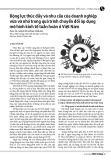
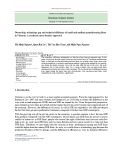
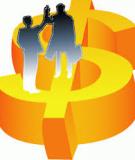

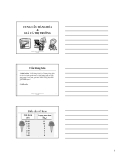
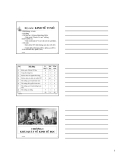


![Kinh tế vi mô: Giới thiệu chương 1 [Tổng quan kiến thức]](https://cdn.tailieu.vn/images/document/thumbnail/2011/20111230/dungtranktgt/135x160/giao_trinh_kinh_te_hoc_vi_mo0001_0349_0071.jpg)
















